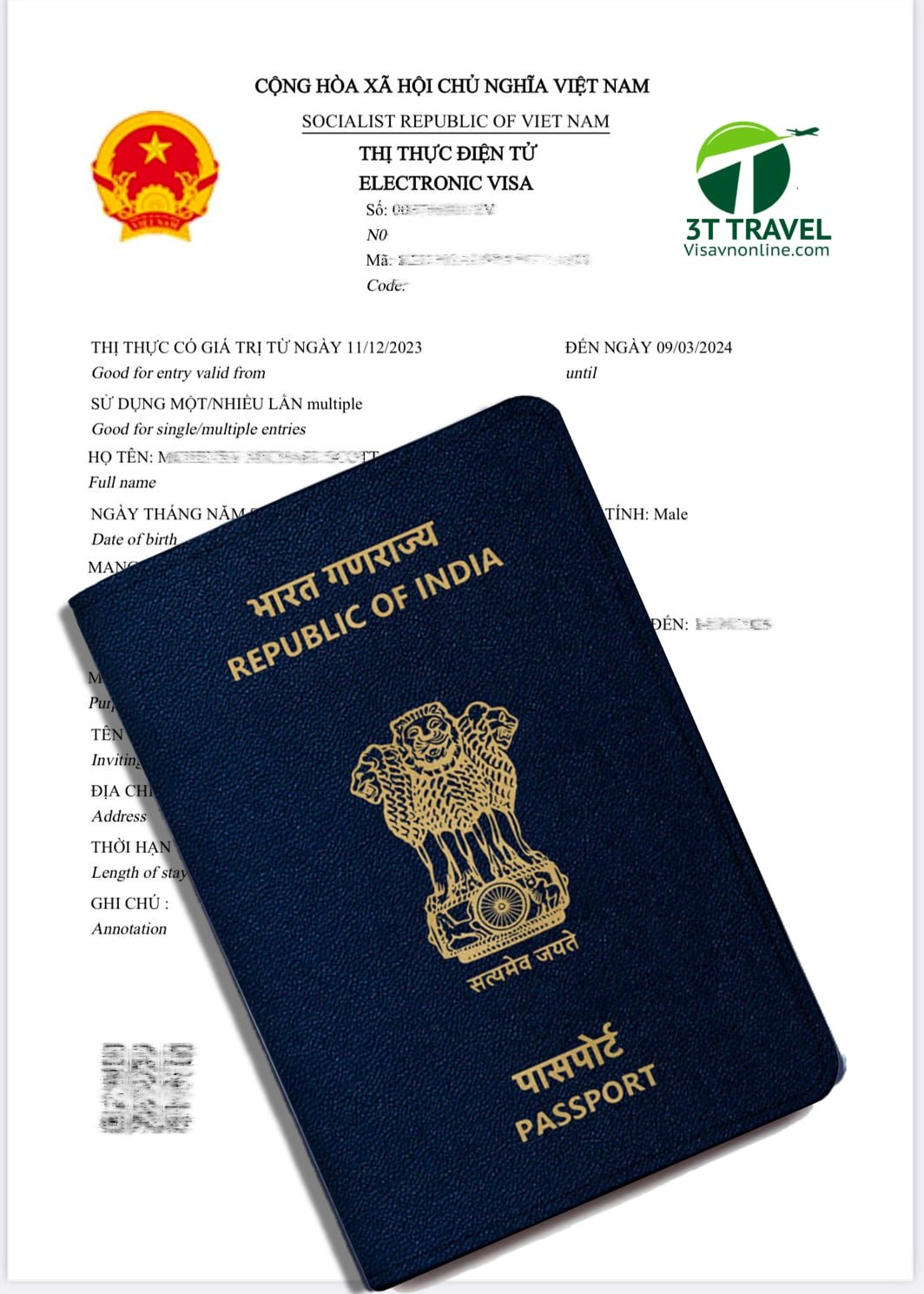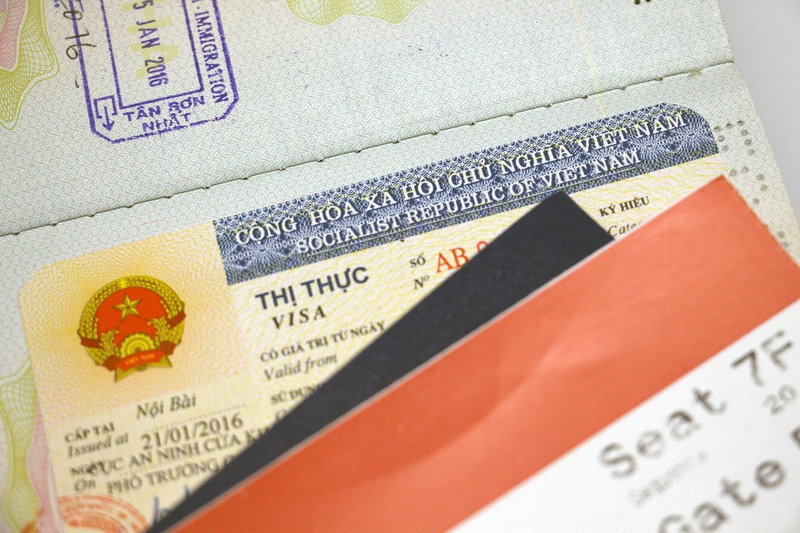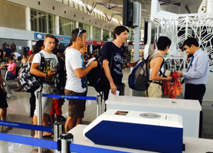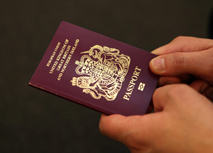Have you ever dreamed of globe-trotting, but felt disheartened by the complex visa application process? Let Visavnonline.com help you make your dream come true with our 'Simple Guide on How to Make a Visa'. An exciting journey awaits you, and all you need is a visa to unlock it.
Step 1: How to Make a Visa? - Determining Visa Types
When it comes to obtaining a visa, the first crucial step is determining the appropriate visa type based on your specific purpose of travel, whether it be for tourism, business, work, or other reasons.
Visa types vary depending on the intended purpose of the visit, and each type has its own set of requirements and limitations. It is essential to thoroughly understand these specific requirements and restrictions associated with each visa category to ensure a smooth and successful visa application process.
By carefully identifying the right visa type and being well-informed about its prerequisites and constraints, you can increase your chances of obtaining the visa that aligns perfectly with your travel intentions. So, take your time to research and comprehend the nuances of each visa category before proceeding with the application process.
Step 2: How to make a visa and passport?
Once you have determined the appropriate visa type for your travel purpose, the next important step is to gather all the necessary documents for the visa application.
Commonly required documents for visa applications typically include:
- Passport: A valid passport with at least six months of validity beyond the intended date of departure.
- Passport-sized Photos: Recent passport-sized photos that meet the specific requirements of the visa application.
- Visa Application Form: A completed visa application form, which can usually be obtained from the official website of the respective country's embassy or consulate.
- Proof of Travel Itinerary: Details of your travel itinerary, including flight bookings, hotel reservations, and planned activities during your stay.
- Financial Documents: Proof of sufficient funds to cover your travel expenses, such as bank statements, income tax returns, or sponsorship letters.
Additional documents may be required based on the specific visa type and destination. For instance:
- For a tourist visa, you may need to provide a detailed travel itinerary, travel insurance, and a letter of invitation (if applicable).
- For a work visa, you might need an employment contract, a letter from your employer, and qualifications relevant to your job position.
It is crucial to carefully review the visa application requirements and prepare all the necessary documents meticulously. Missing or incomplete documents can lead to delays or denials of the visa application. Therefore, staying organized and ensuring you have all the required paperwork will significantly increase your chances of a successful visa application process.

Organized and ensuring you have all the required paperwork will significantly increase your chances of a successful visa application process
Step 3: Choose the Application Method
After gathering all the necessary documents, the next step is to select the appropriate method for applying for the visa. Depending on the country and visa type, there are usually three main options for visa application:
Embassy/Consulate Application
This traditional method involves submitting your visa application in person or by mail to the embassy or consulate of the country you plan to visit. You will need to fill out the visa application form, attach the required documents, and pay the visa processing fee. The processing time can vary, and it is advisable to check the specific embassy or consulate's website for detailed instructions and processing times.
E-Visa Application
Many countries offer an electronic visa (E-visa) option, which allows you to apply for the visa online through the official government website. The process typically involves filling out an online application form, uploading the required documents, and making the visa fee payment electronically. E-visas are often processed faster than traditional methods, and the approved visa is sent to your email for printing.
Visa on Arrival (if applicable)
Some countries offer a visa on arrival service, which allows eligible travelers to obtain a visa upon arrival at the designated entry points in the country. This option is usually available for certain nationalities and specific travel purposes. To use this option, you will need to fulfill the requirements set by the country, such as having a valid passport, supporting documents, and paying the visa fee at the port of entry.
It is essential to choose the most suitable application method based on your travel plans, visa type, and processing time. Make sure to follow the instructions carefully and provide all the necessary information to increase the likelihood of a successful visa application. Remember to check the official government websites or consult with the respective embassy or consulate for the most up-to-date information on visa application procedures.
Step 4: How to make a visa application?
Once you have decided on the application method, the next step is to fill out the visa application form. Follow these step-by-step instructions to complete the form accurately and efficiently:
How to get an Official Application Form?
For embassy/consulate applications and E-visa applications, visit the official government website of the country you plan to visit. Look for the visa application section, where you can find the downloadable application form or the online application portal.
Provide Personal Information
Filling your personal information in the application form such as your full name, date of birth, nationality, passport number, and contact number. Ensure that all information matches your passport exactly to avoid any discrepancies.
State Travel Details
Specify the purpose of your visit (tourism, business, work, etc.) and the intended duration of stay. Include your planned entry and exit dates, as well as your travel itinerary within the country if required.
Attach Required Documents
Upload or attach all the necessary documents as specified by the visa application guidelines. These may include a valid passport, passport-sized photos, flight itineraries, hotel reservations, invitation letters, and any other supporting documents.
-
Note: Additional Information (if requirement)
Some visa applications may require additional information, such as proof of financial capability, travel insurance, vaccination certificates, or a detailed travel plan. Be sure to include these as needed.
Review and Double-Check
Before submitting the application, carefully review all the entered information to ensure accuracy and completeness. Any errors or missing information may lead to delays or even rejection of the visa application.
Submit the Application
Submit the completed application form and all supporting documents through the chosen application method. For embassy/consulate applications, follow the instructions on where and how to submit the application. For E-visa applications, follow the online submission process.
By carefully following these steps and providing all the required information and documents, you can increase the chances of a successful visa application. If you have any doubts or questions, refer to the guidelines provided on the official government website or contact the relevant authorities for assistance.

Before submitting the application, carefully review all the entered information to ensure accuracy and completeness
Step 5: Paying the Visa Fee
When applying for a visa, you need to pay a processing fee, which is non-refundable. The fee varies based on the visa type and processing time. Accepted payment methods usually include credit/debit cards and online payment systems.
How to make a visa fee payment online?
Some countries may also accept bank transfers or cashier's checks. Keep the payment receipt as proof of payment during the visa processing. Always check the official government website or the embassy/consulate website for the exact fee and accepted payment methods.
Step 6: Submitting the Application
After completing the visa application form, you can submit it through the designated channels. Depending on the visa type and your country of residence, you may submit the application at the nearest embassy or consulate, through a visa processing center, or online (if applicable). Be sure to follow the specific guidelines and requirements provided by the issuing authority.
How to make a visa process faster?
Once you have submitted your application, you can track its status through the relevant tracking system or by contacting the visa processing center or embassy/consulate. Processing times may vary, so it's essential to apply well in advance to avoid any travel delays. Keep your reference number or tracking ID handy for easy tracking of your visa application.
Step 7: Waiting for Approval
The processing time for visa applications can vary depending on the type of visa and the country you are applying from. It is essential to check the estimated processing time provided by the issuing authority to have a better idea of how long you might have to wait for your visa to be approved.
In case of any delays or issues with your application, you should reach out to the visa processing center, embassy, or consulate handling your application. They can provide you with updates and assistance in resolving any problems.
If your visa application is denied, don't panic. You can seek clarification from the visa issuing authority about the reasons for the denial. In some cases, you may be able to reapply with additional or corrected documentation. However, if your visa is denied for specific reasons, such as not meeting the eligibility criteria, it might be challenging to overturn the decision.
It's essential to stay patient during the processing period and be prepared for any possible outcomes. Be proactive in seeking information and following up on your application to ensure a smooth visa process.
Step 8: Receiving the Visa
Once your visa application has been approved, you will receive the approved visa along with necessary information. This information may include the validity period of the visa, the number of entries allowed, and any specific conditions or restrictions associated with the visa.
It's crucial to carefully check the validity and conditions of your visa to ensure it meets your travel needs. Take note of the visa's expiration date and the number of entries allowed. Some visas may be single-entry, allowing you to enter the country only once, while others may be multiple-entry, allowing you to enter and exit the country multiple times within the visa's validity period.
Make sure to follow the visa conditions during your travel to avoid any issues with immigration authorities. If there are any questions or discrepancies regarding your visa, you should contact the visa-issuing authority or the embassy/consulate for clarification before your trip.
Don't let the process of obtaining a visa dampen your enthusiasm for a new journey. Visavnonline.com is here to assist you in learning 'how to make a visa' quickly and easily. Embrace the journey, experience world cultures and landscapes, and create unforgettable memories. Start your journey right now!











